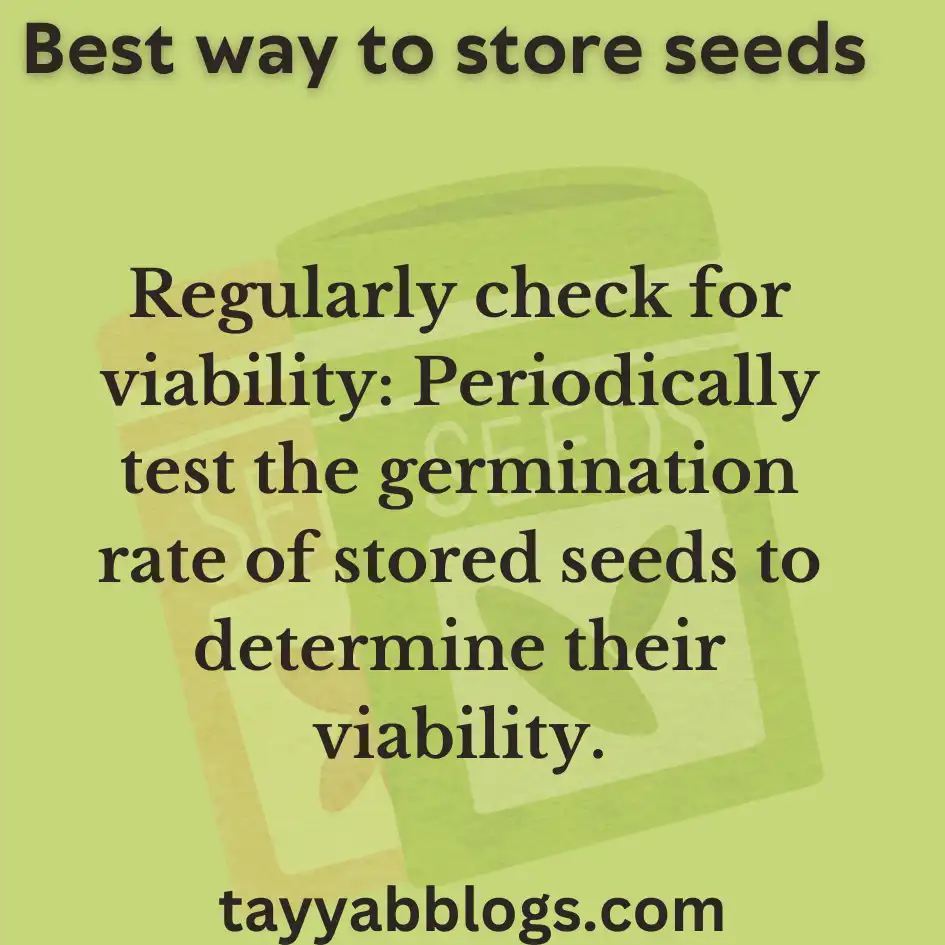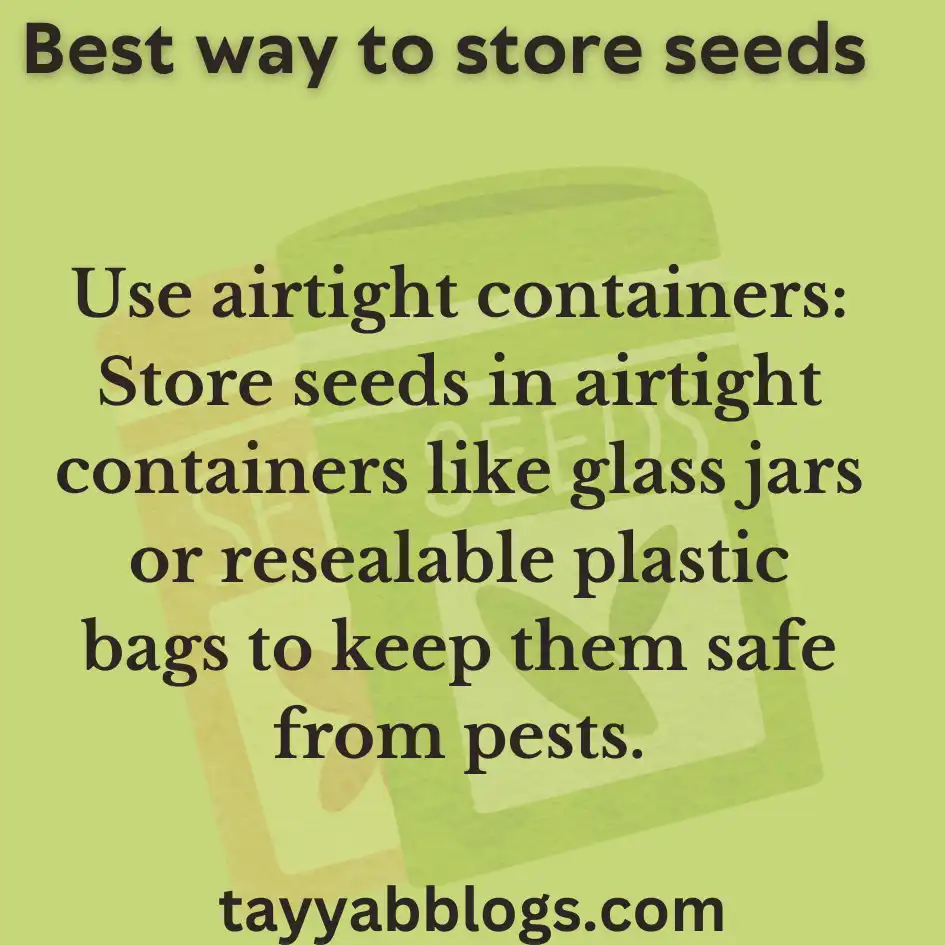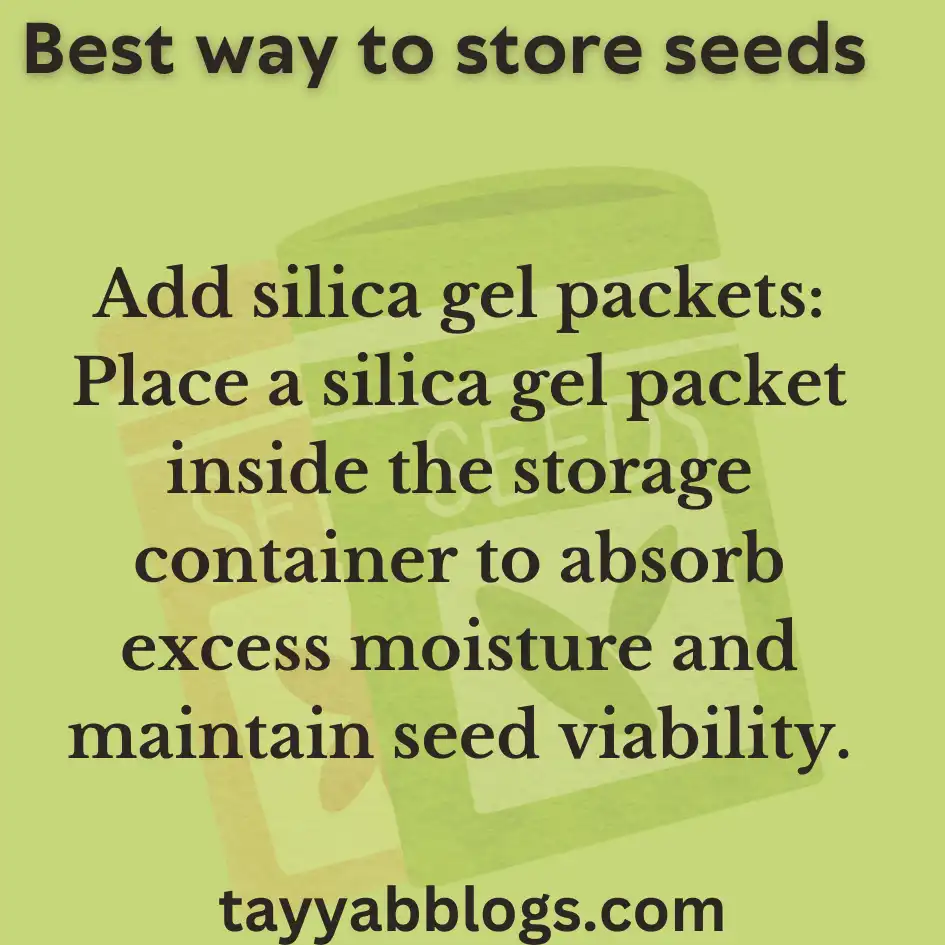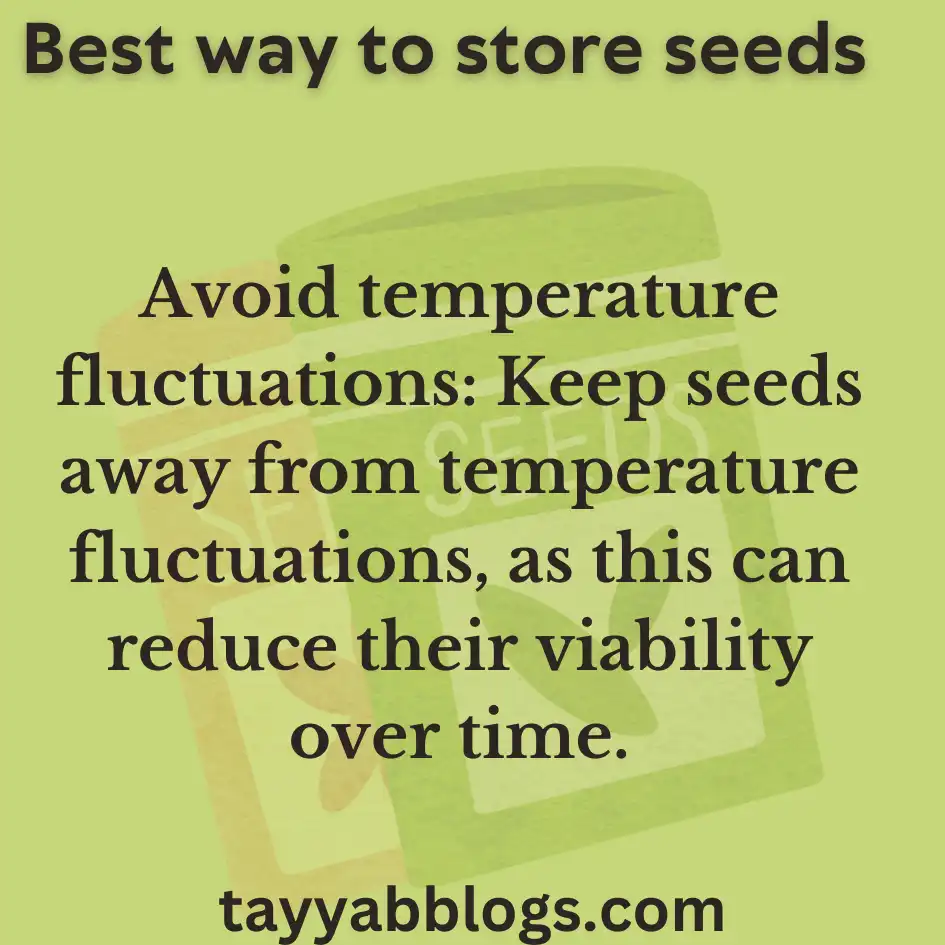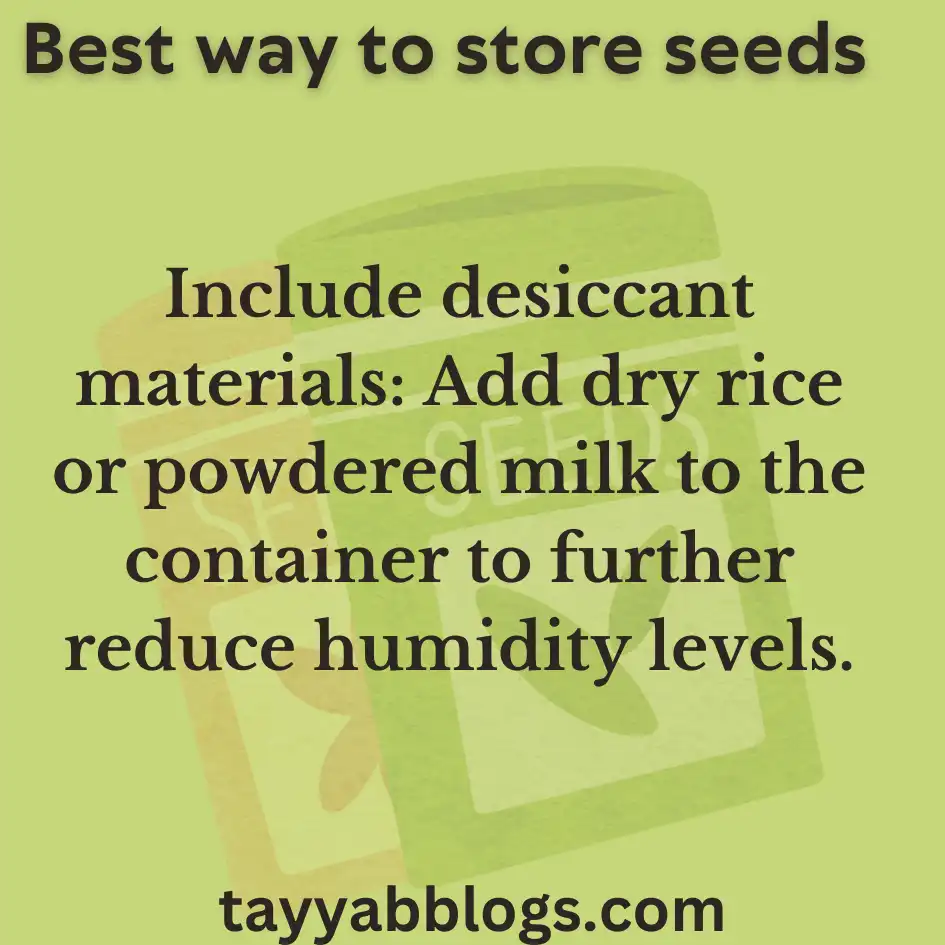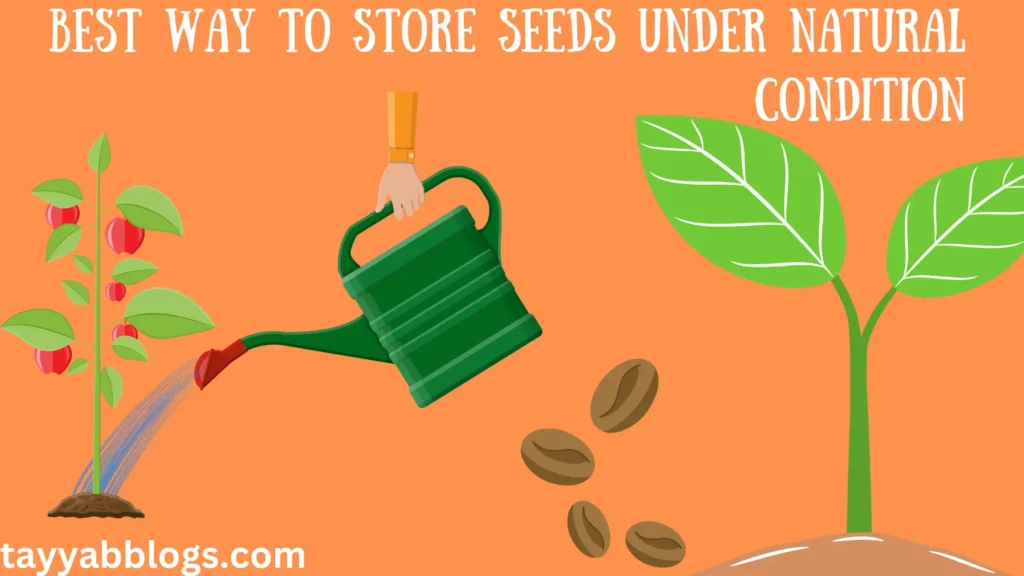best way to store seeds you know how to save seed if no the you will read this blogs
When newly grown seeds are tested for germination the remaining seeds should be kept in natural or simulated environment. Therefore, the dormant seeds will come out of their dormant state. Monitoring the process of dormancy loss by periodically removing some seeds from their native or simulated habitat and testing them for germination in light and dark under the same thermoperiod used to test newly grown seeds it is possible to do.
The seeds can be placed in fine-mesh bags and then returned to the environment where they were first collected. The mesh bags also enable the seeds to be exposed to normal soil moisture and temperature conditions.
Returning seeds to their natural home
It can sometimes be very difficult or even impossible due to logistical issues. Keeping temperature data is also important; However, this can be challenging if the environment is remote. Instead of planting seeds in their natural habitat, one option is to do this in an outside environment as close to the ecosystem as possible (such as a garden, farm plot, wooded area, slough house, or unheated greenhouse).
Records of temperature and precipitation
It should be maintained to determine the environmental factors the seeds are exposed to. By moving the seeds to a different incubator or grow room (or varying the temperature in a room) each month, it is possible for the seeds to simulate field conditions. The alternative temperature regime should correspond to the mean monthly maximum and minimum soil temperatures in the habitat or in the general geographic area for that month.
timing of seed dispersal
The timing of seed dispersal must be taken into account when attempting to replicate nature in the laboratory. When seeds are dispersed in spring, a hot stratification treatment is required; When seeds are dispersed in autumn, a cold stratification treatment is required. What are the treatments for cold and warm stratification? By doing so, it is indicated that thala seeds are sown on a wet substrate at normal winter (cool stratification) or summer (warm stratification) temperatures.
The ideal temperature for many species is about 5 Cc, the effective range for cold stratification is between about 0 and Kfc (Stokes, 1965; Nikolaeva, 1969).
However, according to Okagarani and Kawai (1982), PC was the ideal stratification temperature for Dioscorea japonica and D. septemloba seeds.
Pyrus malus (Nguyen & Come, 1984); 2°C for Primula sieboldii (Washitani and Kabaya, 1988); and O-.VC for Ferula spp. (Nikolaeva, 1969). Eriodictyon spp. (Chhat. 1988); and Pyrus malus (Nguyen & Comm. 1984).
When it came to encouraging Rhodotypos karyoides seeds to germinate, an alternating temperature regime of 1 and KFC sometimes outperformed a constant temperature of 5 °C (Flemien, 1933). When Gaeum urbamum seeds were cold stratified outdoors in England, they germinated more frequently than when cold stratified at 5 °C (Pons. 1983).
In an initial attempt to stimulate germination using cold stratification therapy, place the seeds on a wet medium and maintain them at 5 °C for approximately 12 weeks. If 5 °C doesn’t work try a daily alternating temperature regime of just above and below 5 °C, or 5/I or 6/1 °C.
Dried seeds best way to store seeds
Dried seeds can sometimes be given a “cold stratification treatment” by placing them in a freezer (eg, Choate, 1940). However, due to the fact that (1) the seeds are not consumed and (2) the freezer temperature is below the effective threshold for cold stratification, this therapy often does not promote loss of dormancy. The substrate should be monitored occasionally during the cold stratification treatment to make sure it is still wet. if the drying stage is before, during or after
Seeds of some species will not germinate after cold stratification treatment (Flemian, 1931; Stokes, 1965), or they can do so only in bright light (Campbell, 1982) or warm temperatures (Allen, 1962).
When seeds are subsequently imbibed and kept at the proper germination temperature, the drying period provided after cold stratification treatment does not inhibit germination in other species (Danielson and Tanaka, 1978; Griesbach and Voth, 1957). ; Bazzaz, 1970). When Panicum anceps cold-stratified seeds were dried for a month before planting, germination was not inhibited, but a drying interval of 2 months reduced it from 58 to 2256 (Gannon and Barton, 1946).
According to Baskin and best way to store seeds
According to Baskin and Baskin (1916b), warm stratification can occur at temperatures between 20 and 35 °C, with 20 to 25 °C being ideal (Nikolaeva, 1969). Therefore, for the warm stratification treatment, plant the seed on a moist substrate at summer temperatures (for example, 25°C, 15.30°C, or 35°C) for about 12 weeks. However, in the wild, the seeds may be dry or, alternatively, wet and dry during the summer. After several months of dry storage at room temperature, many seeds that require exposure to high summer temperatures to germinate in fall will do so as well.
During Dormancy loss best way to store seeds
Dormancy loss in dry stored seeds can be affected by their relative humidity. After being exposed to different Rh levels for several months. Draba ICMA seeds germinated at 10, 15 and 20°C with germination percentage of 0-13% RH, 40% RH, 25-39%, 50-60% RH, 49-65%, and 60-100% RH . 0% (Baskin and Baskin, 1979b).
During Relative humidity best way to store seeds
At relative humidity of 70% to 100%, most of the seeds were destroyed (Baskin and Baskin, 1979b). Seeds that need to be dried for several days before being placed in a container should be kept dry at room temperature to avoid mold growth. Even in deserts, seeds experience diurnal variation in temperature and relative humidity (RH) (Capp-Penn ft. AI. 1975).
This is because dry storage of seeds at room temperature does not mimic the actual environment. However, according to Baskin and Baskin (1983), the germination responses of seeds after dry storage at room temperature and after wet-dry treatment in summer may be comparable.
You can also visit our study website
TOP TEN best way to store seeds Explain In images
